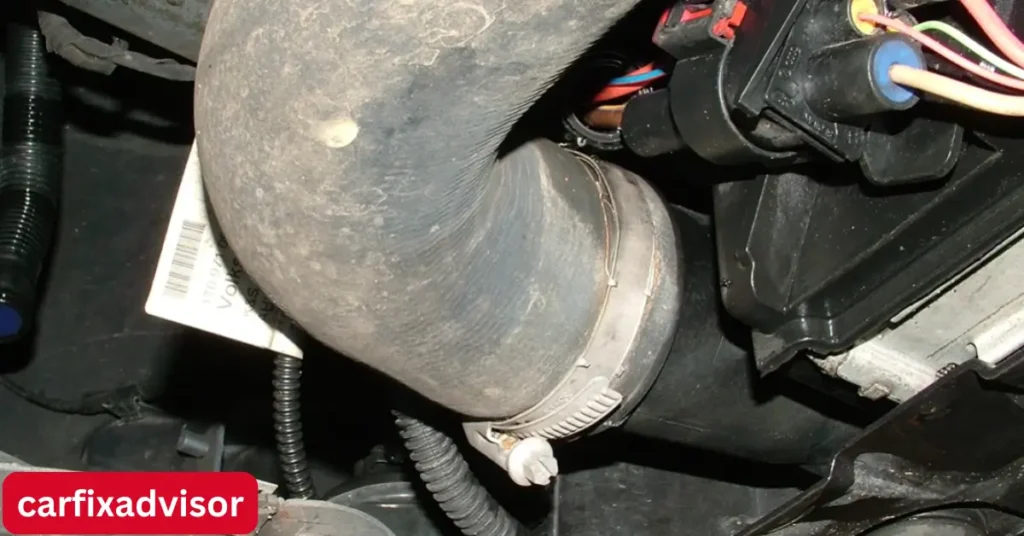When it comes to your vehicle’s cooling system, the radiator and its hoses are crucial components. But have you ever wondered whether radiator hoses should feel hard when hot? This seemingly simple question can lead to a deeper understanding of car maintenance and engine health. In this article, we will explore the role of radiator hoses, what to expect when they are hot, and what you can do to maintain your car’s cooling system in top condition.
Radiator hoses are essential to your vehicle’s engine cooling system. They transport coolant between the engine and the radiator, allowing the system to regulate the engine’s temperature. Without proper coolant circulation, the engine can overheat, causing significant damage.
The hoses themselves are made from durable rubber materials, designed to withstand high temperatures and pressure. However, just like any other part of your car, radiator hoses can deteriorate over time. Understanding how they should behave, especially when hot, can help you spot potential issues before they escalate.
In this guide, we will focus on whether radiator hoses should be hard when hot, how to assess their condition, and when it’s time to replace them.
The Role of Radiator Hoses in Your Vehicle’s Cooling System
To understand why radiator hoses should or should not be hard when hot, it’s important to first grasp their function within the cooling system.
Functions of Radiator Hoses
-
Coolant Circulation: Radiator hoses transport coolant between the engine and the radiator, facilitating heat transfer.
-
Pressure Containment: The hoses are designed to handle the pressure created as coolant is pumped through the system.
-
Temperature Regulation: The cooling system helps maintain the engine at a consistent temperature by dissipating heat from the engine into the air.
These hoses are exposed to extreme conditions, both in terms of temperature and pressure. As the engine heats up, the coolant temperature rises, which can affect the hoses in various ways.
Should Radiator Hoses Be Hard When Hot?
Now, let’s address the core question: should radiator hoses be hard when hot?
What Happens to Radiator Hoses When Hot?
When your engine is running and the coolant is circulating, radiator hoses will naturally expand as the temperature rises. It’s normal for the hoses to feel somewhat firmer than usual when they are hot, as the rubber material is designed to withstand these high temperatures and pressures. However, the hoses should not feel excessively rigid or overly stiff.
If your radiator hoses feel extremely hard to the touch when the engine is hot, this could indicate that the hoses have become brittle or are failing. Over time, the rubber used in the hoses can deteriorate due to the heat, causing it to lose flexibility. This leads to a situation where the hoses may become excessively stiff or hard when exposed to high temperatures.
Factors Influencing Hose Hardness When Hot
-
Age of the Hoses: Older hoses are more likely to lose their flexibility and can feel hard when hot.
-
Exposure to Heat: Overexposure to high engine temperatures can lead to hose deterioration, causing them to harden.
-
Coolant Type: Some types of coolant can be more aggressive on rubber, leading to faster degradation of the hoses.
-
Environmental Conditions: Extreme weather conditions, such as high heat or exposure to UV rays, can contribute to the hardening of the rubber.
Normal vs. Abnormal Hardness
-
Normal: Radiator hoses should feel slightly firmer than usual when hot, but you should still be able to press them slightly with your fingers.
-
Abnormal: If the hoses feel excessively hard or rigid and don’t yield when you press on them, it’s a sign that the rubber has likely started to break down. In such cases, the hoses may need replacement.
Why Is Hose Hardness Important?
The condition of your radiator hoses is directly linked to your engine’s cooling system efficiency. If the hoses become too hard, cracked, or brittle, they can develop leaks or even burst under pressure. This can lead to coolant loss and engine overheating, resulting in costly repairs.
Potential Consequences of Hardened Hoses
-
Leaking Coolant: Hardened hoses are more likely to develop cracks, causing coolant to leak. This can lead to engine overheating.
-
Bursting Under Pressure: Excessively stiff hoses are at greater risk of bursting when subjected to the high pressure created by the cooling system.
-
Reduced Cooling Efficiency: If the hoses are not functioning properly, the coolant may not circulate effectively, leading to improper engine cooling.
Signs That Your Hoses Need Replacement
-
Visible Cracks or Bulges: Look for any visible damage, such as cracks or bulges in the hoses. These are signs that the hoses are weakening and may need replacement.
-
Leaking Coolant: If you notice coolant on the ground or around the hoses, it’s a sign that they might be leaking and need to be replaced.
-
Overheating Engine: If your engine is consistently overheating, it could be a result of poor coolant circulation due to damaged hoses.
-
Low Coolant Levels: Frequent need to top off your coolant could indicate a slow leak caused by damaged hoses.
How to Maintain Radiator Hoses for Longevity
To keep your radiator hoses in good condition and avoid the consequences of hardened or damaged hoses, follow these maintenance tips:
Routine Inspections
-
Visual Checks: Regularly inspect the hoses for signs of wear, cracks, or bulges.
-
Touch Tests: Gently squeeze the hoses when the engine is off to check for flexibility. If they feel overly stiff, they may need replacement.
-
Look for Leaks: Check for any signs of coolant leaks around the hose connections or on the ground under your vehicle.
Proper Coolant Maintenance
-
Use the Right Coolant: Always use the coolant recommended by your vehicle manufacturer to avoid damage to the hoses and the cooling system.
-
Flush the Radiator: Periodically flush your radiator to remove old coolant and prevent buildup of deposits that can damage the hoses.
Protecting Hoses from Extreme Conditions
-
UV Protection: Parking your vehicle in the shade can reduce UV exposure, which can cause the hoses to crack and harden.
-
Prevent Overheating: Ensure that your engine is running at optimal temperature by keeping the cooling system in top shape.
The Materials Behind Radiator Hoses
Radiator hoses are crafted from specially formulated rubber compounds designed to withstand extreme heat, pressure, and the corrosive nature of engine coolant. These hoses are typically made of materials such as EPDM (Ethylene Propylene Diene Monomer) or silicone.
Common Materials Used for Radiator Hoses
-
EPDM (Ethylene Propylene Diene Monomer): This is the most commonly used material for radiator hoses. It offers excellent resistance to high temperatures, UV rays, and oxidation, making it a durable choice for everyday vehicles.
-
Silicone: A more advanced option, silicone hoses are flexible and resistant to both high heat and the aggressive chemicals in modern coolants. They tend to last longer and are used in high-performance or racing vehicles.
-
Nitrile Rubber: Sometimes used in specialty hoses, nitrile rubber provides resistance to oils and fuels, but it may not hold up as well under high temperatures as EPDM or silicone.
Understanding the materials used in radiator hoses can help you determine how long they should last and what type of maintenance they require. For instance, silicone hoses tend to last longer than EPDM hoses but may come at a higher cost.
The Lifespan of Radiator Hoses
The lifespan of radiator hoses depends on various factors, including the material of the hose, the vehicle’s operating conditions, and the overall maintenance of the cooling system. On average, radiator hoses should be replaced every 4 to 6 years, though this can vary.
Factors That Influence Hose Lifespan
-
Vehicle Type: High-performance or older vehicles might experience more stress on their cooling system, causing hoses to wear out faster.
-
Driving Conditions: If you often drive in hot climates, frequent stop-and-go traffic, or rough conditions, the hoses will degrade faster due to the increased strain.
-
Coolant Quality: Poor-quality coolant or improper coolant-to-water ratios can accelerate hose degradation.
-
Maintenance Practices: Regular inspections and coolant flushes can extend the lifespan of radiator hoses.
 Should Radiator Hoses Be Hard When Hot
Should Radiator Hoses Be Hard When Hot
How to Prevent Your Radiator Hoses from Becoming Hard
Preventing your radiator hoses from becoming too hard requires regular care and attention to your vehicle’s cooling system. Here are some practical steps to keep your hoses in good shape.
1. Regular Inspections and Maintenance
Regularly check the condition of your radiator hoses, particularly when your vehicle reaches around the 4-year mark. Even if they appear intact, internal wear may still be occurring. Look for:
-
Cracks and Bulges: These are clear signs of hose deterioration.
-
Leaks: Coolant leaks near the hose connections could indicate a weak or damaged hose.
-
Hose Flexibility: While the hoses will naturally become stiffer as the engine gets hot, they should still be pliable when you press on them.
2. Replace Worn Hoses Promptly
If you notice any of the signs of deterioration, such as cracks or bulging, replace the hoses as soon as possible. It’s far cheaper and easier to replace hoses proactively than to deal with a burst hose that leads to engine overheating.
3. Use Quality Coolant
Using high-quality, manufacturer-recommended coolant helps reduce the buildup of sludge and prevents the coolant from becoming overly corrosive to the hoses. Always check your vehicle’s manual for the correct coolant type and mixture.
4. Flush Your Cooling System Regularly
Performing regular radiator flushes helps prevent the buildup of corrosion and debris inside the hoses and cooling system. It also keeps the coolant circulating efficiently, which reduces the risk of overheating.
8. When to Seek Professional Help
If you notice that your radiator hoses feel abnormally hard when hot or if you experience symptoms like engine overheating, coolant leaks, or poor performance, it’s time to consult a professional mechanic. A mechanic can check the entire cooling system to identify any underlying issues, such as faulty hoses, a clogged radiator, or a malfunctioning thermostat.
Common Signs You Need Professional Assistance
-
Engine Overheating: Your car’s temperature gauge reading is high, and the engine shows signs of overheating.
-
Visible Leaks: You notice coolant leaking from the hoses or under the car.
-
Weak or Brittle Hoses: The hoses are stiff, brittle, or cracked when checked.
-
Frequent Coolant Loss: You need to top off coolant frequently, which can indicate a leak in the system.
A professional inspection can ensure that your cooling system is working properly and that your radiator hoses are in good shape. Don’t wait until it’s too late—early intervention can prevent costly repairs down the road.
Conclusion: Should Radiator Hoses Be Hard When Hot
Radiator hoses should not become excessively hard when hot. While it’s normal for them to feel firmer as the engine heats up, they should still maintain some flexibility. If they become stiff, brittle, or cracked, it’s a sign they need to be replaced to prevent potential issues like coolant leaks or engine overheating.
Regular inspections and maintenance are crucial to keeping your radiator hoses in good condition. Use the right coolant, perform radiator flushes, and check for any visible damage. These steps can help extend the life of your hoses and avoid costly repairs in the future.
Taking care of your vehicle’s cooling system is essential for optimal performance. If you notice any issues with your radiator hoses, consult a trusted mechanic to ensure your engine stays cool and runs smoothly.
